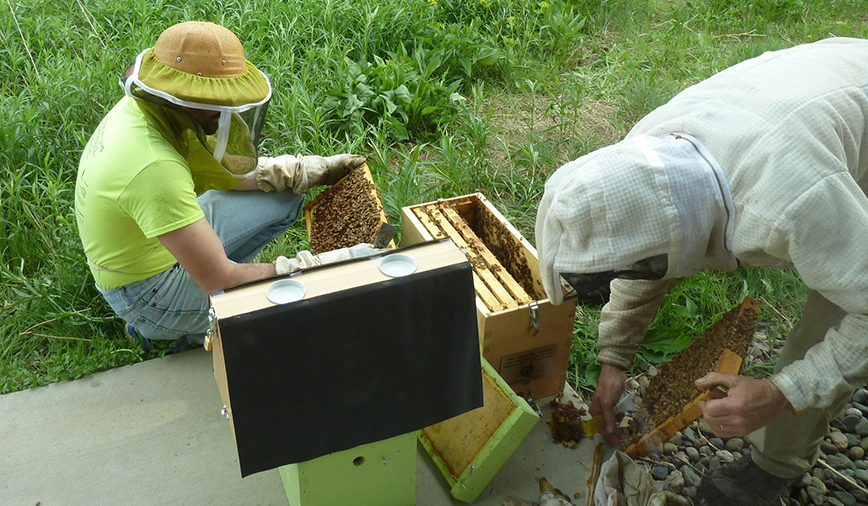Growing up, I was a huge fan of the Hardy Boys and Nancy Drew mysteries. And thank goodness. Because here at Hickory Knolls, solving mysteries is all in a day’s work.
Take, for instance, the months preceding our grand opening in 2011. Back then we were faced with all sorts of new-construction puzzlers, like The Case of the Phantom Wall Switch and The Hidden Plumbing Problem. But careful attention to our punch list combined with visits from various contractors soon had us up and running and ready for business.
It wasn’t long, however, before we ran into a new batch of mysteries–in the form of murder-mystery parties. Over the past few years we have hosted events like Murder in the ‘Ex’-treme and A Fungus Among Us for adults as well as Clue-like birthday parties for kids; in fact, the Hickory Knolls Whodunnits have become some of our most-requested party themes.
We’ve also, over the years, become pretty adept at decoding the cryptic signs that wildlife leave behind. From weird nests and random burrows to unidentified fur, feathers, tracks and scat, we try our best to provide helpful information to visitors and callers alike.
The other day, though, we encountered a mystery unlike any we’d seen before. Our exhibit room, normally a relatively quiet space, was abuzz. Literally. Hundreds of honeybees, residents of our indoor observation hive, littered the floor and windowsills. Moreover, hundreds more stood poised to join them.
Accomplished detectives that we are, we surveyed the situation and uttered a collective, “What the …?!?!”
A quick investigation revealed that the length of clear vinyl tubing that connects the hive to the great outdoors had been pulled away, leaving a gap of about an inch—plenty of room for the industrious insects to squeeze out and begin flying around.
Lucky for us, bees have a natural inclination to fly toward light. And what was streaming through our 20-ft. high, floor-to-ceiling windows that day? Sunlight! Glorious sunlight. By turning off all the other lights in the room, and the adjacent lobby, we were able to keep the majority of bees within about 4 feet of our south-facing windows.
After making sure the tube was firmly reattached to the hive, we began our next mission: capturing the bees on the glass and taking them outside. Although the task at first appeared daunting, it ended up being pretty painless. Stinging, we found, was the farthest thing from the bees’ minds. Somewhat dazed and no doubt confused, they climbed placidly onto our fingers and hands. All we then had to do was walk them outside and place them on flowers, where they could recharge and reorient, then fly themselves back to the outside entrance of their hive.
Eventually though, our work switched from rescue to recovery. I’m not sure if these bees died because they flew too hard against the glass, or if they perished due to dehydration. What we do know is that the number of dead bees we found on the floor matched, roughly, the number of, ah, splotches we found on the windows.
Whether due to stress, or impact, a large number of bees rather forcefully voided their digestive tracts on the exhibit room windows. The 18-ft. wide expanse of 20-ft. tall windows.
I don’ t know if you’ve ever had occasion to clean up bee poop off of 360 sq. ft. of glass, but let me tell you it doesn’t budge easily. I ended up consulting Inspector Google and learned that 0000 steel wool along with vinegar and water is what the experts recommend. The good news is, the method worked well and our windows now sparkle. The bad news is that, given the number of spots, we were scrubbing for a very long time.
Right about the time we were finishing up, beekeeper Chris Saad and his son David came by to assess the health of the bees and determine whether the hive would need any structural modifications. Their findings were all good. The queen is strong and producing lots of eggs; the workers are fit and free of mites. The hive, too, is just fine.
Well, except for one thing. In checking over the tube to figure out just how it became dislodged, we came across some evidence the perpetrator inadvertently left behind. Teeth marks. On the outside end of the tube.
While that discovery answered one question, it raised another, ultimately more important one: Who, or what, chewed on the tube?
Some day soon, magnifying glasses and field guides in hand, we’ll solve this Mystery of the Hacked Hive. When we do, we’ll post our verdict on the Hickory Knolls Facebook page. Until then, look out Nancy, Frank and Joe. We Hickory Nuts will be working hard to crack the case.
Pam Otto is the manager of nature programs and interpretive services at the Hickory Knolls Discovery Center, a facility of the St. Charles Park District. She can be reached at 630-513-4346 or potto@stcparks.org.

